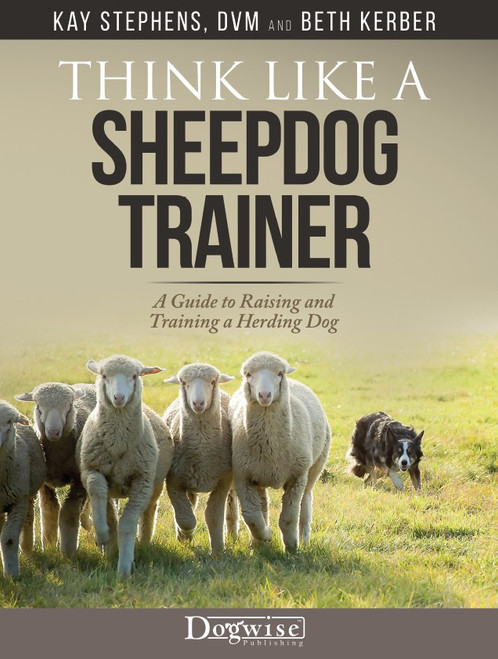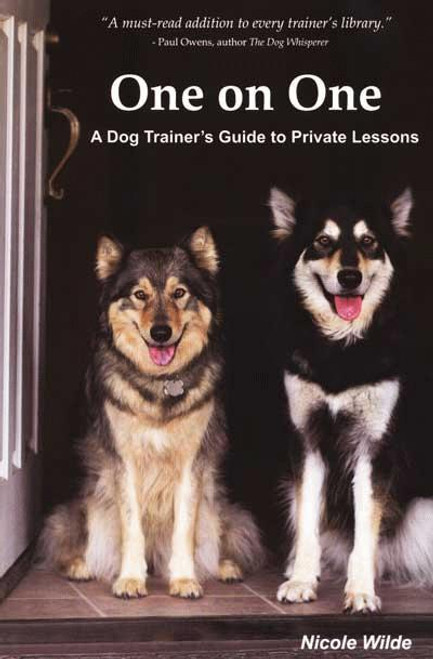Think Like A Sheepdog Trainer looks at the ancient art of sheepdog training through the lens of science-based learning theory and behavior analysis. It is designed to help you understand how and why a method works and to give you the tools for setting up and evaluating training plans and for approaching training problems in a logical, evidence-based manner.
While there are good sheepdog training books available, almost all of them assume the reader has a basic knowledge of sheep and sheep behavior, the skill and experience to train a dog to do complex behaviors, the ability to figure out training steps on their own, and a clear mental picture of what a properly trained herding dog should look like.
This book covers several topics that will help you become a more successful sheepdog trainer. Here’s what you can expect:
1. We discuss in detail how to train, manage and communicate with your dog before you take him to sheep. Without a proper relationship and training foundation, working stock with your dog is extremely difficult.
2. We introduce you to science-based learning theory and explain how it can be used to speed up and improve your ability to train your dog. We demonstrate how to evaluate and analyze training techniques so you can choose which ones work best for you and your dog.
3. We describe and discuss the physical and mental traits a sheepdog trainer must cultivate to succeed. People aren’t born as excellent trainers; training is a learned skill that must be practiced and refined.
4. We explain the behavior and handling of sheep. Understanding and knowing how to properly control sheep is essential to your journey in the world of sheepdog training. Many newcomers to herding have no previous experience with sheep. We provide some basic sheep handling exercises to improve your ability to control livestock.
5. We offer detailed lesson plans that break down training sessions into very small and clearly explained steps that a novice handler can apply on her own. This should help you with developing a daily lesson plan, a goal for that day’s lesson and a way to evaluate how you and your dog are progressing. You will discover that having a training plan and metrics to evaluate that plan will help you train faster and more efficiently.
6. Finally, we give you ways to think about training problems and how to approach and solve them in a logical, evidence-based manner.
Because people have been training dogs and herding with dogs for many years, some of the methods described here are similar to those found in other books and from other sources. We have chosen training approaches that are widely used, least aversive and easily understood and implemented by an inexperienced trainer. You will find our sources in the resources and recommended reading section at the end of the book.
Remember, sheepdog training is a lifelong journey. You will learn something new with every dog you train and with every competition that you enter. We hope this book will help make that journey a little easier.
*This book focuses on training Border Collies for United States Border Collie Handlers Association(USBCHA) type trials, but the information is applicable to all herding breeds and herding venues.
Kay Stephens, DVM, MS is a veterinarian, animal behaviorist and dog trainer who has been training and competing with herding dogs for more than 30 years. She owns and operates Puppy Love Dog Training, a dog training school that specializes in sound, positive learning principles and techniques for both people and dogs in College Station, Texas.
Beth Kerber is a professional writer who began competing with herding dogs more than 10 years ago. She lives in Ohio where she raises a commercial flock of Katahdlin sheep and regularly uses dogs for farm chores.
1 Review Hide Reviews Show Reviews
-
Think Like a Sheepdog Trainer
Very much appreciated their insights and approach to working sheepdog training. Their sections about corrections was well done; specific to this work but applicable for the rest of us if we have herding dogs. Early exposure, basic obedience, body position, avoiding potential problems etc - all valuable for working or non-working sheepdog guardians. For working handlers, a very honest book. Most of the book is about the work and sheep including sheep choice, behavior, training for the work and sport of herding.













